Masterwork Editions for Choir Wednesday, October 04, 2017
recommended by Jen Sper and Alissa Ruth, School Choral Music Specialists
HIGH SCHOOL – Classical Era
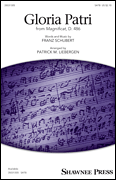 Gloria Patri by Franz Schubert/Patrick M. Liebergen
Gloria Patri by Franz Schubert/Patrick M. Liebergen
Written when he was eighteen years old, Schubert’s only setting of the Magnificat text is arranged here for mixed voices and piano. This exuberant piece begins with joyous acclamations in the opening measures, polyphonic writing and a lyrical presentation of the “amens” and followed by the return of the homophonic style in the closing declamatory statements. A wonderful selection for serious programming.
We like this because it is a textbook example of Schubert’s style, and the balance of homophony and polyphony is accessible for school choirs. The fugue style is included, but doesn’t go on too long, allowing for students to feel successful, and the ranges and tessitura fit the high school age group.
HIGH SCHOOL – Renaissance Era
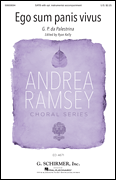 Ego Sum Panis Vivus by G.P. da Palestrina/arr. Ryan Kelly
Ego Sum Panis Vivus by G.P. da Palestrina/arr. Ryan Kelly
Blending scholarship and practicality, this performing edition of a Palestrina masterpiece can be performed a cappella. Or, employing the optional instrumental parts for strings in C, Alto and Bass clefs, and a keyboard part, it can be performed with whatever combination your situation calls for.
We like this because it is the perfect example of Renaissance style, which provides a plethora of great teaching tools, from solfege-accessible melodies to part independence. Also, is there really ever a reason NOT to work on a Palestrina piece?
HIGH SCHOOL – Renaissance Era
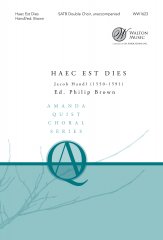 Haec Est Dies by Jacob Handl/arr. Philip Brown
Haec Est Dies by Jacob Handl/arr. Philip Brown
A nice edition of a lesser-known work of the 16th century. “Haec Est Dies” is written for two SATB choirs, but the vocal writing is simple enough to work for younger high school choirs who are ready for the challenge.
Don’t let the double choir voicing scare you! We like this piece because it feels powerful and impressive without being too difficult; it’s the perfect introduction to double choir singing.
MIDDLE SCHOOL – Renaissance Era
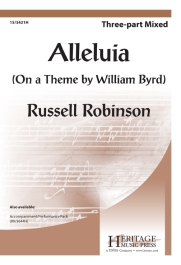 Alleluia (On a Theme by William Byrd) by William Byrd/arr. Russell Robinson
Alleluia (On a Theme by William Byrd) by William Byrd/arr. Russell Robinson
Inspired by the Byrd “Haec Dies,” this stylistically clean and direct arrangement, using only the word “Alleluia,” provides a nice introduction to counterpoint and singing independently for your developing choirs. Optional piano reinforces the vocal lines but can also be excluded for a fine a cappella performance.
We like this because it provides an accessible introduction to true, part-independent, 3-part singing, in ranges that are accessible to those young, middle school, changing voices.
MIDDLE SCHOOL – Renaissance Era
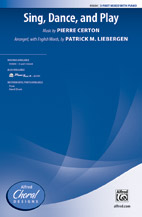 Sing, Dance, and Play by Pierre Certon/arr. Patrick M. Liebergen
Sing, Dance, and Play by Pierre Certon/arr. Patrick M. Liebergen
This tuneful chanson is perfectly set for developing singers with modest vocal ranges. Bouyant “fa la las” alternate with joyful new English words by the arranger. Optional flute and hand drum enhance the dance-like character. Solid 3-part mixed repertoire.
We like this because it exemplifies the standard madrigal style, especially if you choose to perform it with the optional flute and hand drum. Perfect for middle school choirs.
MIDDLE SCHOOL – Classical Era
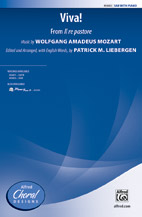 Viva! (from Il Re Pastore) by W.A. Mozart/arr. Patrick M. Liebergen
Viva! (from Il Re Pastore) by W.A. Mozart/arr. Patrick M. Liebergen
A triumphant Mozart masterwork for today’s choirs! This joyful opera finale opens and closes with a boisterous choral fanfare, sandwiches a brief expressive vocal duet in the middle, features robust Italian lyrics (optional English text and IPA pronunciation guide included), and incorporates a thrilling dig-in piano accompaniment all in just two minutes. Not necessarily familiar, but undeniably fantastic!
We like this because it is the perfect example of Mozart’s style of writing, it translates well into the 3-part voicing, and offers a great way to put your solfege/number and rhythm work into practice.
WOMEN’S CHOIR – Baroque Era
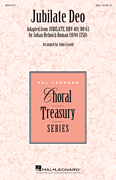 Jubilate Deo by Johan Helmich Roman/arr. John Leavitt
Jubilate Deo by Johan Helmich Roman/arr. John Leavitt
This selection by Baroque composer Johan Helmich Roman, adapted in this edition for treble voices, is recommended for festival and contest programming for choirs in middle school and high school, as well as community children’s choirs. An excellent choice for developing important performance techniques in music of the era.
We like this because of the excellent part-writing (that has been well-adapted for women’s voices) and because the ranges and the Baroque style make this “feel good” to sing
WOMEN’S CHOIR – Renaissance Era
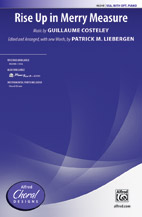 Rise Up in Merry Measure by Guillaume Costeley/Patrick M. Liebergen
Rise Up in Merry Measure by Guillaume Costeley/Patrick M. Liebergen
Enjoy this lighthearted Renaissance era madrigal highlighting resonant treble sonorities, terraced dynamics, and accessible homophonic voice parts. Consider adding the optional piano accompaniment, optional hand drum part, or perform entirely a cappella.
We like this because every voice part is interesting and involved, embodying that classic Renaissance style, and we think this level would be an excellent fit for freshmen women.
MEN’S CHOIR – Classical Era
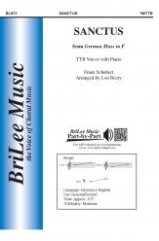 Sanctus by Franz Schubert/arr. Lon Beery
Sanctus by Franz Schubert/arr. Lon Beery
Beery’s adaptation of this Schubert favorite, now for male ensembles, adheres to the original SATB work with additional supportive accompaniment. Maintaining the beauty and simplicity of Schubert’s writing, the added option of singing in German or English is very appealing. Hymn-like in nature, it is sure to add understated elegance to any concert program.
We like this because it offers an excellent avenue to start practicing vocal control at this age level, and because the three-part writing feels solid and supported.
If you have questions about these or other similar titles, visit our website at stantons.com, email us at choral@stantons.com, or call us at 1.800.42.MUSIC, ext. 1. We are happy to help with all of your sheet music needs!
About the Authors:
Jen Sper has been with Stanton’s since 2006. A former middle school and high school choral director, she holds a Bachelor of Music Education degree from Baldwin Wallace College Conservatory of Music. An active choral singer and accompanist throughout the Central Ohio area, she also enjoys good food, running (to counteract the good food…) and the Muppets.
Alissa Ruth began working at Stanton’s in the summer of 2016. She is a former middle and high school choir director and holds a Bachelor of Music in Education degree from Capital University. She is an active choral singer, and spends her free time running, doing yoga, cooking, and watching Netflix.